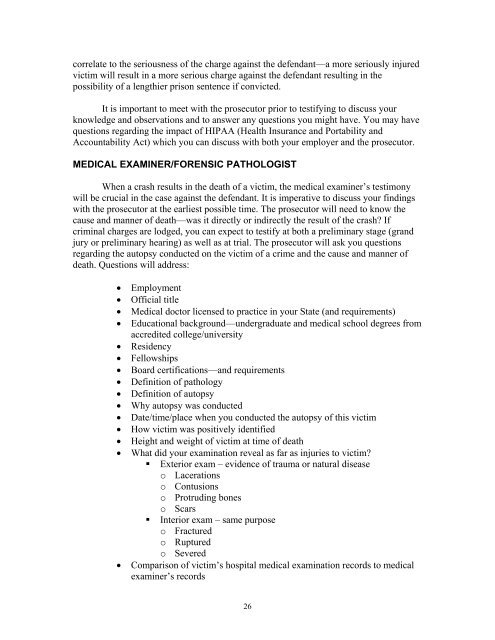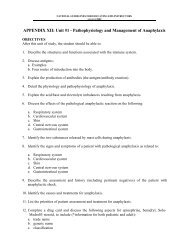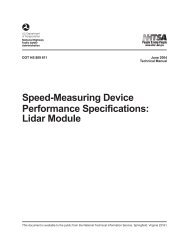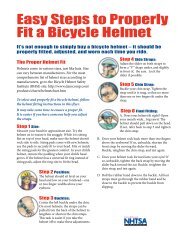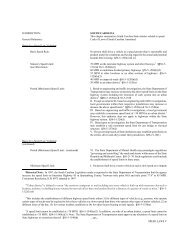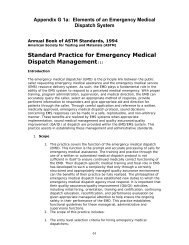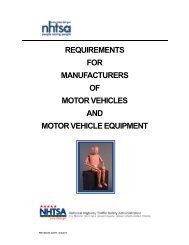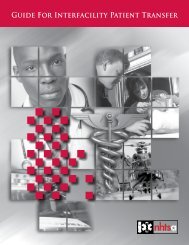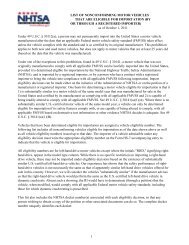The Criminal Justice System: A Guide for Law Enforcement ... - NHTSA
The Criminal Justice System: A Guide for Law Enforcement ... - NHTSA
The Criminal Justice System: A Guide for Law Enforcement ... - NHTSA
You also want an ePaper? Increase the reach of your titles
YUMPU automatically turns print PDFs into web optimized ePapers that Google loves.
correlate to the seriousness of the charge against the defendant—a more seriously injured<br />
victim will result in a more serious charge against the defendant resulting in the<br />
possibility of a lengthier prison sentence if convicted.<br />
It is important to meet with the prosecutor prior to testifying to discuss your<br />
knowledge and observations and to answer any questions you might have. You may have<br />
questions regarding the impact of HIPAA (Health Insurance and Portability and<br />
Accountability Act) which you can discuss with both your employer and the prosecutor.<br />
MEDICAL EXAMINER/FORENSIC PATHOLOGIST<br />
When a crash results in the death of a victim, the medical examiner’s testimony<br />
will be crucial in the case against the defendant. It is imperative to discuss your findings<br />
with the prosecutor at the earliest possible time. <strong>The</strong> prosecutor will need to know the<br />
cause and manner of death—was it directly or indirectly the result of the crash? If<br />
criminal charges are lodged, you can expect to testify at both a preliminary stage (grand<br />
jury or preliminary hearing) as well as at trial. <strong>The</strong> prosecutor will ask you questions<br />
regarding the autopsy conducted on the victim of a crime and the cause and manner of<br />
death. Questions will address:<br />
• Employment<br />
• Official title<br />
• Medical doctor licensed to practice in your State (and requirements)<br />
• Educational background—undergraduate and medical school degrees from<br />
accredited college/university<br />
• Residency<br />
• Fellowships<br />
• Board certifications—and requirements<br />
• Definition of pathology<br />
• Definition of autopsy<br />
• Why autopsy was conducted<br />
• Date/time/place when you conducted the autopsy of this victim<br />
• How victim was positively identified<br />
• Height and weight of victim at time of death<br />
• What did your examination reveal as far as injuries to victim?<br />
Exterior exam – evidence of trauma or natural disease<br />
o Lacerations<br />
o Contusions<br />
o Protruding bones<br />
o Scars<br />
Interior exam – same purpose<br />
o Fractured<br />
o Ruptured<br />
o Severed<br />
• Comparison of victim’s hospital medical examination records to medical<br />
examiner’s records<br />
26


